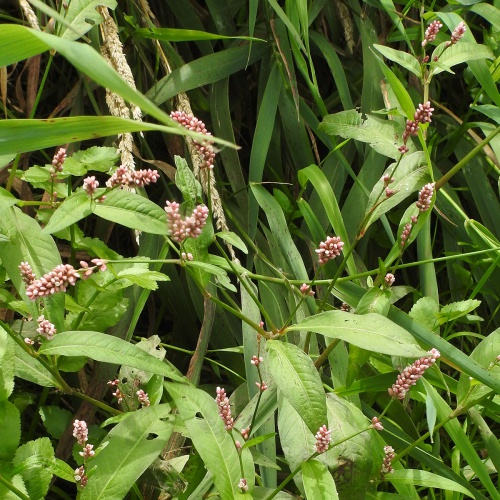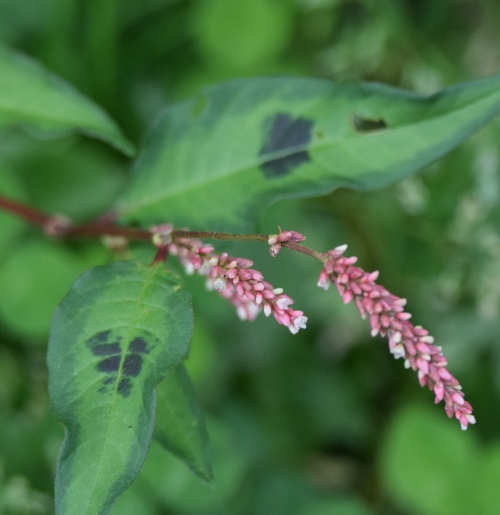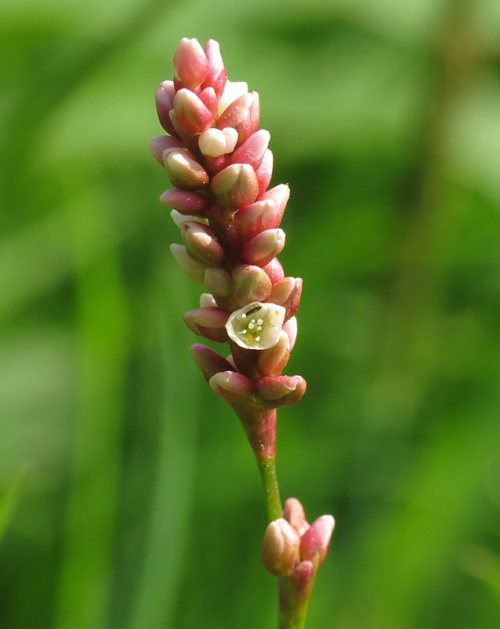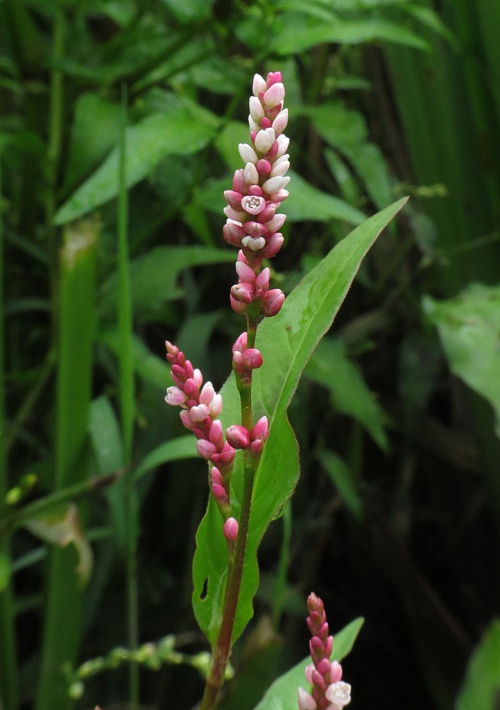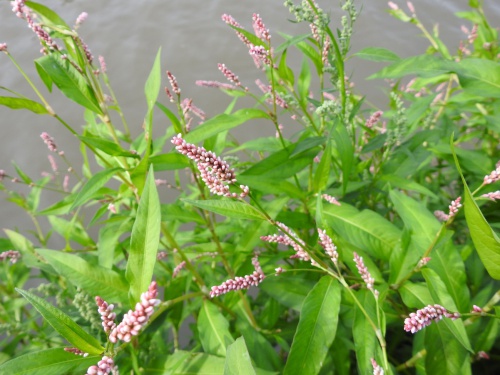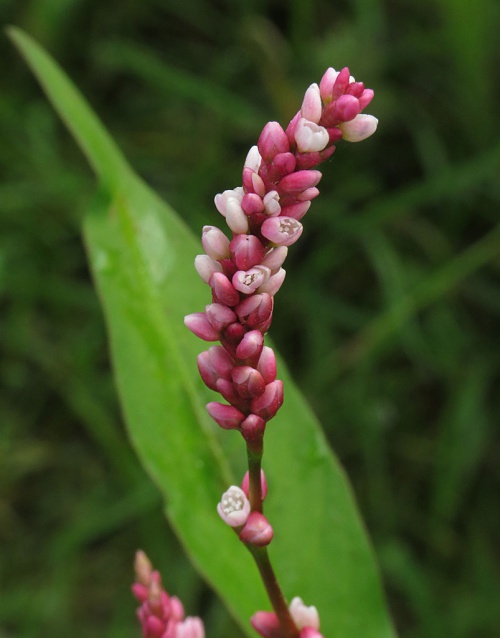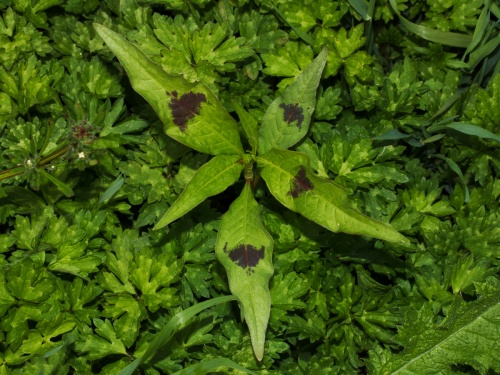Redshank - Persicaria maculosa
Short to medium, erect to sprawling, hairless, branched plant. Leaves lanceolate, tapered at the base, often with a large blackish blotch. Flowers crowded in stout, short spikes, pale to bright pink.
The flowers look similar to Amphibious Bistort and paler forms also resemble Pale Persicaria.
No glands (or few) on flower and flower-stem, which is usually glabrous; veins of outer tepals undivided or divided with with forward directed branches. Dark blotch on leaf can be seen on P lapathifolia as well. Leaves lanceolate
Photo showing flower and flower stalk without glands.
Waste, bare or cultivated land, often close to water.
June to October.
Annual.
Widespread and common in Britain.
Common in Leicestershire and Rutland. In the 1979 Flora survey of Leicestershire it was found in 569 of the 617 tetrads.
In the current Checklist (Jeeves, 2011) it is listed as Native, Locally Frequent
Leicestershire & Rutland Map
Enter a town or village to see local records
MAP KEY:
Yellow squares = NBN records (all known data)
Coloured circles = NatureSpot records: 2020+ | 2015-2019 | pre-2015
UK Map
Species profile
- Common names
- Redleg, Redshank
- Species group:
- Wildflowers
- Kingdom:
- Plantae
- Order:
- Caryophyllales
- Family:
- Polygonaceae
- Records on NatureSpot:
- 196
- First record:
- 01/01/2005 (Harry Ball)
- Last record:
- 28/10/2023 (Smith, Peter)
Total records by month
% of records within its species group
10km squares with records
The latest images and records displayed below include those awaiting verification checks so we cannot guarantee that every identification is correct. Once accepted, the record displays a green tick.
In the Latest Records section, click on the header to sort A-Z, and again to sort Z-A. Use the header boxes to filter the list.


